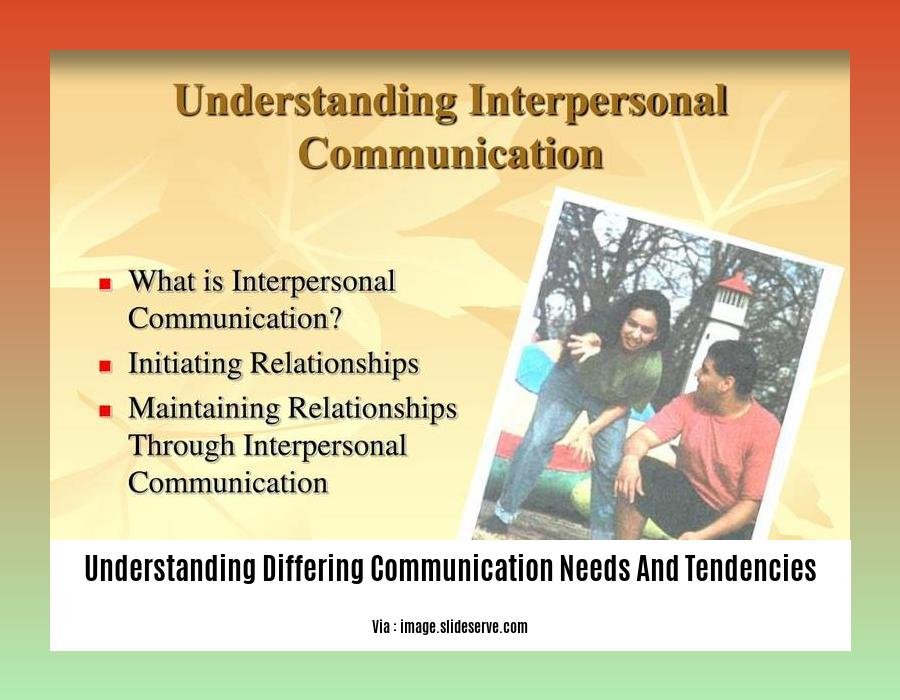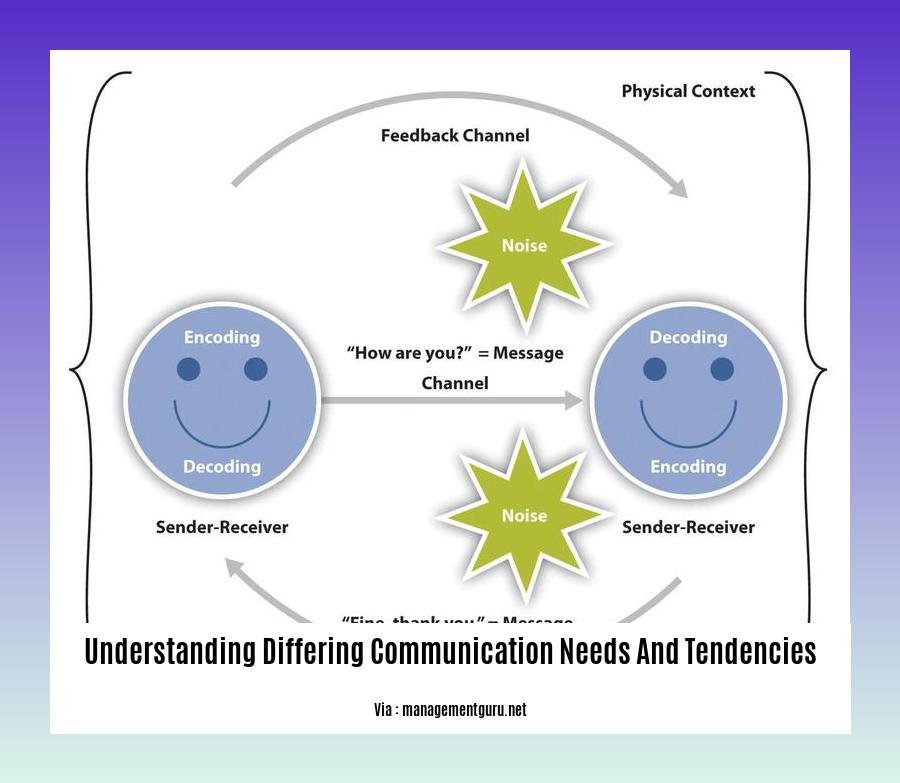Embark on a journey to delve into the intricacies of communication, where we explore the diverse needs and tendencies that shape our interactions. The guide, “Understanding Differing Communication Needs and Tendencies: A Guide to Effective and Inclusive Interactions,” will navigate you through the complexities of human communication, empowering you to foster meaningful connections and cultivate an inclusive environment.
Key Takeaways:

- Communication styles greatly influence interactions:
- Passive: Avoids conflict by suppressing opinions.
- Aggressive: Dominates conversations and undervalues others.
- Passive-Aggressive: Indirectly conveys negativity.
- Assertive: Expresses ideas respectfully while considering others.
- Understanding communication styles improves:
- Communication effectiveness by adapting to different contexts.
- Conflict resolution by clarifying misunderstandings.
- Relationship quality by fostering harmony and productivity.
Understanding Differing Communication Needs and Tendencies
Effective communication is a key aspect of forming meaningful connections and collaborating efficiently. But to do so, it is imperative to understand that people have differing communication needs and tendencies.
Cultural Background and Communication Styles
Communication styles can be influenced by cultural background, making it imperative to consider cultural differences in verbal and non-verbal cues. For example, some cultures favor indirect communication while others value directness.
Gender and Communication Patterns
Gender also plays a role in communication. Women and men generally adopt different communication patterns, with women being more empathetic and collaborative while men tend to be more competitive and directive.
Generational Differences
Generational gaps can influence communication needs. For instance, younger generations may be more comfortable with electronic communication channels, while older adults prefer face-to-face interactions.
Adapting Communication Styles
To communicate effectively, we should strive to adapt our communication styles to meet the needs of the people we’re interacting with. This means being aware of our own communication style and the different styles of others. By doing this, we create a more inclusive and productive communication environment.
Active Listening
Active listening is essential for understanding differing communication needs and tendencies. It involves paying attention to what others are saying, both verbally and non-verbally, and asking clarifying questions to ensure understanding. By actively listening, we demonstrate respect and build trust.
Empathy in Communication
Empathy is the ability to understand and share the feelings of another person. It’s a critical component of effective communication. By putting ourselves in others’ shoes, we gain a deeper understanding of their perspectives, motivations, and communication styles.
Overcoming Communication Barriers
To overcome communication barriers, we need to be aware of our own biases and assumptions and be open to learning about and adopting different communication styles. This allows us to bridge communication gaps and foster more meaningful and inclusive interactions.
Want to improve your communication skills in romantic relationships? Don’t miss out on our insightful article on communicating across gender differences in relationships to delve into the nuances of gendered communication and discover strategies for more effective dialogue.
Overcoming the gender communication gap can be a challenge. But, with our guide on ways to bridge the gender communication gap you can learn practical techniques to foster mutual understanding and build stronger bonds.
Explore our guide on strategies for more effective cross-gender dialogue to gain invaluable insights into the dynamics of gender communication. With our expert tips, you’ll be equipped to navigate conversations with confidence, empathy, and a shared understanding.
Adapting Communication Styles to Audience Needs
The Art of Tailoring Your Message for Impact
Effective communication is not a one-size-fits-all approach. To truly connect with your audience, it’s crucial to adapt your communication styles to their unique needs.
Key Points to Consider:
-
The Audience: Who are you speaking to? Understand their cultural background, values, knowledge level, and preferred communication channels.
-
Communication Objectives: What do you want to achieve through your communication? Is it to inform, persuade, or inspire?
-
Customization: Tailor your message, language, tone, and non-verbal cues to resonate with your target audience. Consider their age, gender, ethnicity, and social status.
-
Monitoring and Adjustment: Continuously monitor audience feedback and adjust your communication style accordingly. This ensures your message is effectively received and understood.
Key Takeaways:
- Adapting communication styles is essential for effective audience engagement.
- Understanding your audience’s background, values, and communication preferences is crucial.
- Tailoring your message to align with your communication objectives is key.
- Monitoring audience feedback and adjusting communication style fosters clarity and impact.
Most Relevant URL Source:
Fostering Inclusivity and Understanding
The adage “communication is key” couldn’t be more true. But what truly unlocks the power of communication is embracing inclusivity and understanding.
Key Takeaways:
- Be an active listener, putting aside biases and truly hearing others’ perspectives.
- Embrace empathy, seeking to understand and connect with individuals on an emotional level.
- Create a culture that fosters open communication, encouraging diverse viewpoints and respectful dialogue.
- Acknowledge and celebrate differences, valuing the unique contributions of each individual.
- Promote accessibility in all forms of communication, ensuring they’re inclusive for people with varying abilities and backgrounds.
- Provide opportunities for intercultural interactions, allowing individuals to learn from and appreciate diverse cultures.
By fostering inclusivity and understanding, we not only enhance communication but also strengthen our connections with one another. A positive and inclusive communication climate enables individuals to feel valued, respected, and heard, creating a thriving environment for collaboration, innovation, and meaningful relationships. Embrace these principles to cultivate a truly inclusive and understanding society where communication flourishes.
Citation:
Enhancing Communication Effectiveness
To communicate effectively, we must become skilled in both speaking and listening. Why? Because it allows us to clearly express our thoughts and ideas while gaining a deeper understanding of others.
Furthermore, embracing effective communication strategies empowers us to:
- Motivate others to act.
- Facilitate engaging conversations.
- Share information efficiently.
- Solve problems more productively.
Understanding Differing Communication Needs and Tendencies
Effective organizational communication:
– Helps employees understand expectations.
– Aids in meeting goals.
– Enhances motivation.
Key Takeaways:
- Effective communication: Involves speaking and active listening.
–Improving communication skills: Enhances ability to motivate, facilitate conversations, share information, and solve problems. - Effective organizational communication: Supports employee understanding, goal achievement, and motivation.
Citation:
The Power of Active Listening: Enhancing Communication and Understanding











